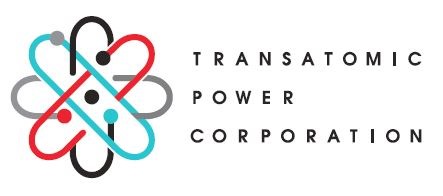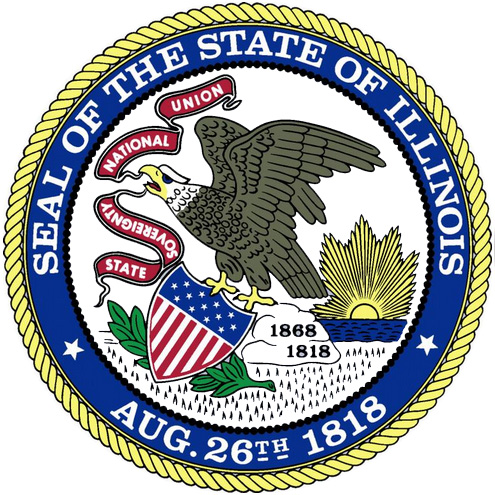Transatomic Power is an American company that was founded in 2011 by two MIT alumni. The goal of Transatomic was the creation of the Waste Annihilating Molten Salt Reactor (WAMSR). Its purpose was to digest spent nuclear fuel. It was also designed to burn either thorium or uranium as fuel. The Transatomic design was inspired by work at the Idaho National Laboratory in the 1960s where a molten salt reactor was developed. Transatomic claimed that their reactor would be seventy- five times as efficient as commercial nuclear power reactors.
The Transatomic design called for a low pressure, high temperature molten salt system. It was supposed to be able to generate five hundred and twenty megawatts of electricity. The safety systems in the design included the ability to automatically drain the molten salt if the temperature got too high. It would also produce much less nuclear waste than conventional nuclear power reactors.
The molten salt would be lithium fluoride (LiF). The reason that LF was chosen over other potential molten salts was because it could dissolve more fuel per unit of salt that other choices. On the other hand, it also lacks the neutron-doubling of a beryllium molten salt which was the choice of INL. This occurs when a nucleus absorbs a neutron and then emits two neutrons.
In order to reduce tritium production during reactor operation, lithium 7 would be added to the molten salt. One problem with that is that current world lithium 7 production is very small and a single Transatomic reactor would require tons.
Zirconium hydride (ZrH) was chosen as a moderator. Molten LF corrodes ZrH so the plan was to add yttrium hydride to the salt to prevent corrosion.
The vat, piping, heat exchangers and pumps in the reactor were to be made of Modified Hastelloy-N. This is a corrosion resistant nickel chromium alloy that was developed at the INL in the 1960s as part of the original research into molten salt reactors.
There is a concern about possible corrosion from the molten salt. The INL used beryllium to manage this problem in their research. The NRC might have require that a prototype Transatomic reactor be run for two full fuel cycles in order to assess corrosion risks. This could have taken up to a decade and would have impacted attempts to commercialize this reactor design.
In 2016, Transatomic published a white paper in which they said that their reactor would not be seventy five times as efficient as existing commercial power reactors. They said in the paper that it might be twice as efficient. In addition, they also dropped the claim that they could burn up spent nuclear fuel.
These admissions prompted the need for significant redesign of the Transatomic reactor. This resulted in delays that put the company behind several of their competitors in the race to produce a demonstration reactor. The longer timeline and reduced performance claims interfered with efforts to raise the fifteen million dollars needed to continue work. Transatomic claims that their reactor would still have commercial potential because it would generate less waste than current commercial power reactors and be much safer.
Transatomic has just announced that it is shutting down operations because it does not have enough money to continue. They also said that they were going release all their intellectual property into the public domain in the hope that other researchers can continue working on the design.
The Third Way think tank released a statement in response to the closure saying that it did not mean that there were major challenges for work on advanced nuclear power reactor design. It may, however, mean that there will be a shakeout and consolidation of companies engaged in the quest for advanced nuclear power reactors.
Blog
-

Nuclear Reactors 618 – Transatomic Power Is Going Out Of Business
-

Geiger Readings for Sep 25, 2018
Ambient office = 95 nanosieverts per hour
Ambient outside = 128 nanosieverts per hour
Soil exposed to rain water = 118 nanosieverts per hour
Beefsteak tomato from Central Market = 120 nanosieverts per hour
Tap water = 114 nanosieverts per hour
Filter water = 102 nanosieverts per hour
-

Nuclear Reactors 617 – U.S. Congress Passing Bills To Support Nuclear Power
Last week, the U.S. House of Representatives passed a bipartisan bill called the Nuclear Energy Innovation Capabilities Act (S. 97). This bill originated in the U.S. Senate. It will permit private companies in the nuclear industry to collaboration with U.S. National Laboratories to investigate advanced nuclear technologies. In the bill, the Department of Energy was directed to lay the ground work for creating a “versatile, reactor-based fast neutron source.”
Meanwhile, the Senate has introduced another bill called the Nuclear Energy Leadership Act (S. 3422). This bill would actually authorize the actual construction of the fast neutron source mentioned in the bill just passed by the House. There is also provision in the new Senate bill for the DoE to “make available high-assay, low-enriched uranium” for research. This bill has not yet been voted upon in Senate.
There was another bill before Congress back in February which is close in content to these two bills. It passed the House but did not pass in the Senate. The Union of Concerned Scientists opposed the bill at the time. They said that fast neutron reactors are expensive and a security risk when compared to the popular light-water reactor design currently in use.
Recently, the nuclear power industry in the U.S. has had difficulty competing with cheap natural gas and expanding use of renewable energy. MIT recently publish a report on a study which concluded that the main reason that the nuclear industry is stagnating in the U.S. is because it is too expensive to construct them. Other analysts have said that the problem was that nuclear reactor design had not been sufficiently developed. Nuclear power in the U.S. is struggling because of the expense of construction, the cost and time necessary to comply with regulations. In addition, there is widespread public concern about safety at nuclear power plants and the unsolved problem of spent nuclear fuel disposal. All together, these problems have prevented significant expansion of nuclear power for decades in the U.S. The new bills mentioned above offer no solution to the problem of the high cost of nuclear reactor construction.
Policy makers are drawn to nuclear power generation because it is said to be a zero-emission energy source. If true, this would help mitigate climate change. However, there is a great deal of carbon dioxide emitted in the construction of a nuclear power plant. Some estimates say that it might take as long as fifteen years before the carbon dioxide debt of construction is paid off. When compared to hydro, solar and wind for power generation, nuclear power still emits more carbon dioxide over its life time that any of them.
The Trump administration has been working on helping nuclear power plants in the U.S. survive but, unfortunately, these efforts have been tied to efforts to save coal-fired power plants. Coal plants do nothing to contribute to climate change mitigation or air quality.
In 2017, the state of Illinois decided to offer a Zero Emission Credit that would include nuclear energy. Fossil fuel generation firms and the Electric Power Supply Association sued the Illinois Power Agency in opposition to the credit. The Federal Energy Regulatory Commission (FERC) and the Department of Justice filed a joint brief about the case with the court. The brief stated that neither FERC or the DoJ had any problem with the credit offer. The U.S. Circuit Court of Appeals has just ruled in favor of support for older nuclear power reactors. Their decision said that the Illinois credit for nuclear power generation did not interfere with federal control in the interstate power markets.
The MIT report mentioned above states, “in the United States, nuclear plants with a combined capacity of 20 gigawatts have operating deficits of less than $12 per megawatt-hour, which suggests that a credit of this amount should be enough to keep these plants open,” adding, “Twelve dollars per MWh is a low premium to pay for low-carbon electricity. For example, it is much less than the cost of current subsidies used to incentivize additional wind generation.” -
Nuclear News Roundup Sep 24, 2018
The Navy says its attack submarine USS Pittsburgh had to return to its Connecticut base recently because of what was described as a “minor” moisture leak within its nuclear propulsion plant. Usnews.com
China will soon be ready to start commercial operations of the world’s first next-generation AP1000 nuclear reactor, possibly setting off a renewed push by the country into atomic power after years of delays and billion-dollar cost blowouts. Scmp.com
-

Geiger Readings for Sep 24, 2018
Ambient office = 104 nanosieverts per hour
Ambient outside = 87 nanosieverts per hour
Soil exposed to rain water = 87 nanosieverts per hour
Bartlett pear from Central Market = 75 nanosieverts per hour
Tap water = 108 nanosieverts per hour
Filter water = 100 nanosieverts per hour
-

Geiger Readings for Sep 23, 2018
Ambient office = 106 nanosieverts per hour
Ambient outside = 91 nanosieverts per hour
Soil exposed to rain water = 89 nanosieverts per hour
Beefsteak tomato from Central Market = 110 nanosieverts per hour
Tap water = 106 nanosieverts per hour
Filter water = 89 nanosieverts per hour
-
Nuclear News Roundup Sep 22, 2018
Crews in Galveston have completed work on a World War II-era military cargo ship that previously served as a barge-mounted nuclear reactor. Brownsvilleherald.com
In election year, campaigners against proposed nuclear plant in India hope to be heard. Thewire.in
Duke Energy lifts emergency at Brunswick nuclear plant; relief workers start to arrive. Newsobserver.com
-

Geiger Readings for Sep 22, 2018
Ambient office = 75 nanosieverts per hour
Ambient outside = 83 nanosieverts per hour
Soil exposed to rain water = 84 nanosieverts per hour
Orange bell pepper from Central Market = 84 nanosieverts per hour
Tap water = 120 nanosieverts per hour
Filter water = 112 nanosieverts per hour
Dover sole – Caught in USA = 100 nanosieverts per hour
